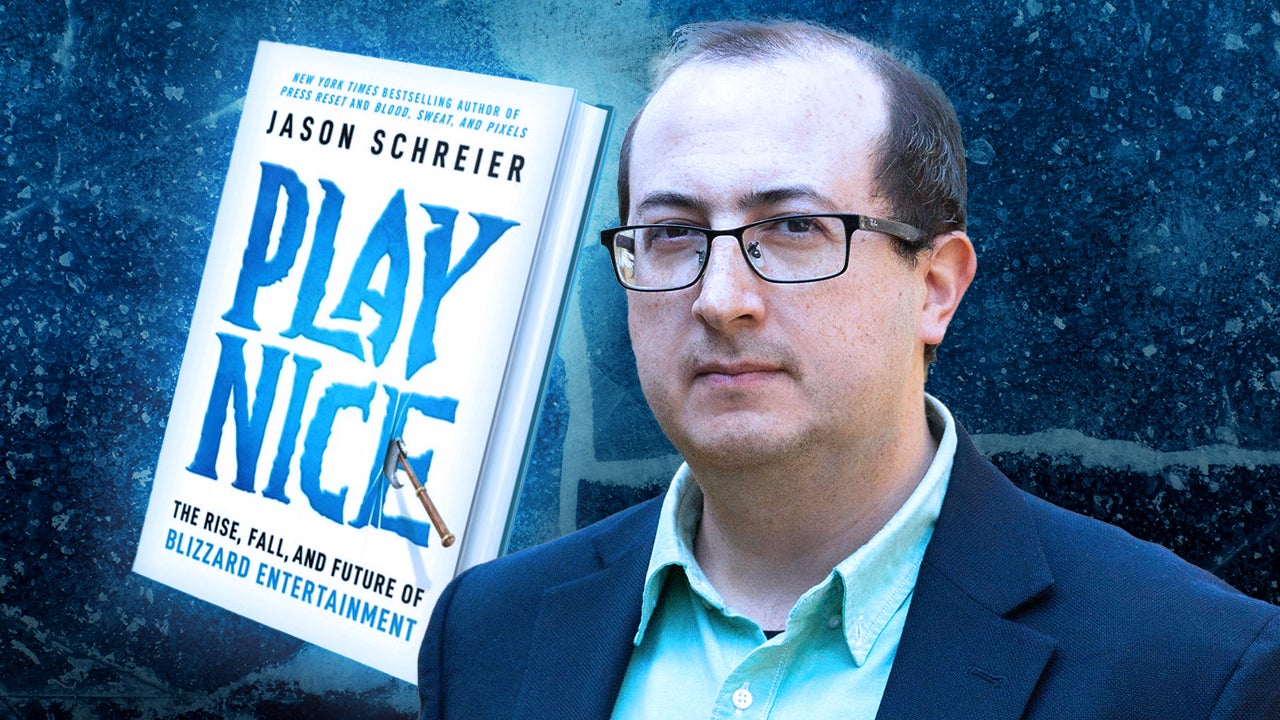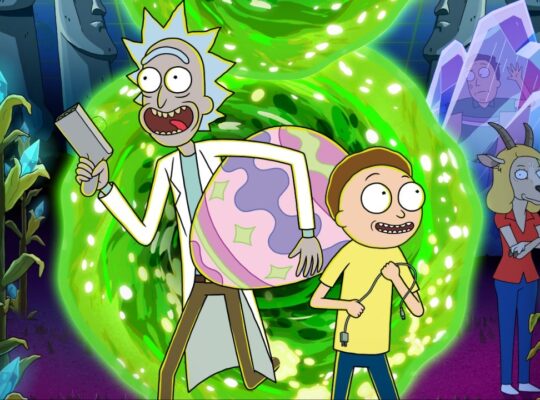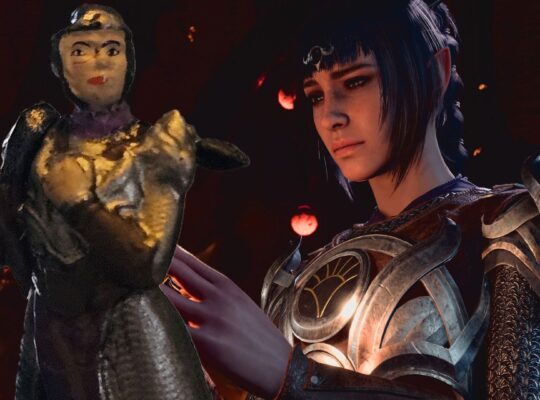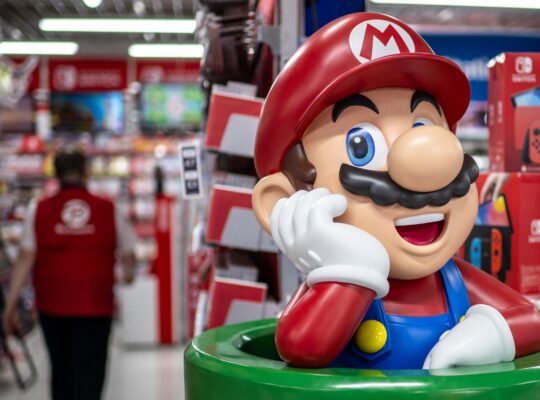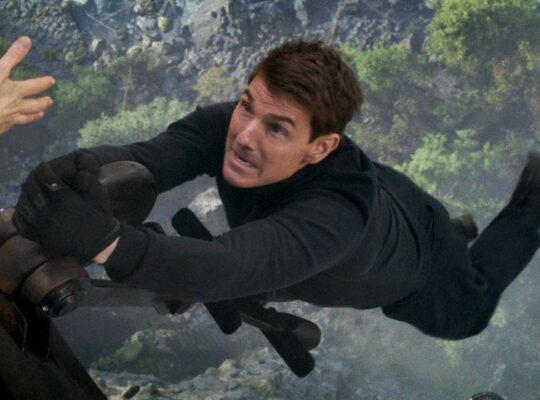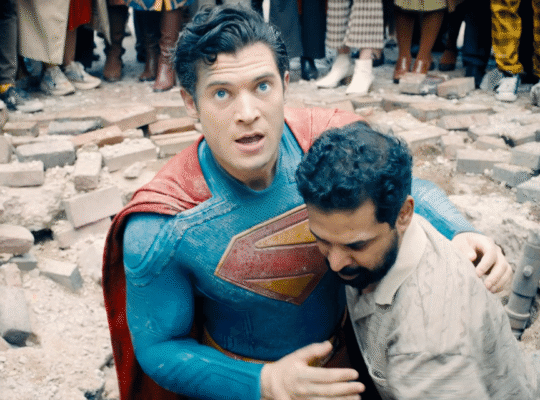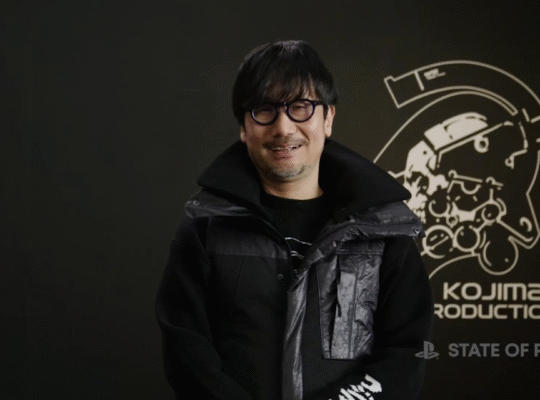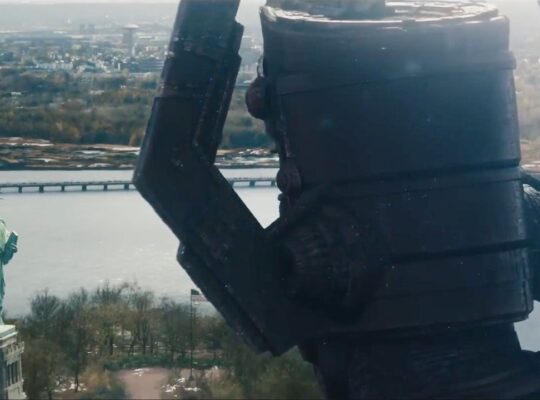If various news events in recent years have ever caused you to wonder, “What the heck has been going on at Blizzard Entertainment?” Bloomberg journalist Jason Schreier’s new book has an answer for you.
Play Nice: The Rise, Fall, and Future of Blizzard Entertainment is Schreier’s third book on the games industry, following Blood, Sweat, and Pixels (2017) and Press Reset: Ruin and Recovery in the Video Game Industry (2021). While both of Schreier’s previous books canvas multiple studios along a particular theme, Play Nice turns a focused lens on one of the most interesting and tumultuous studios in video games.
Play Nice covers three decades of Blizzard history, bookended by the foundation of the company by Allen Adham and Mike Morhaime in 1991 and Adham’s most recent departure from the company at the start of this year. To tell the story, Schreier has interviewed over 300 current and former employees about their memories and experiences with Blizzard. The story canvases the company’s rash of hits: Warcraft, StarCraft, Diablo, Overwatch, World of Warcraft, and Hearthstone, as well as a number of canceled or otherwise less successful projects. It examines the ups and downs of the company itself as it passed between corporate owners, the internal culture that resulted in both deep company loyalty, and one of the most prominent work culture lawsuits in video game history.
Play Nice: The Rise, Fall, and Future of Blizzard Entertainment is out on October 8, 2024. Ahead of its release, I was able to read through the entirety of an advanced copy of the book before speaking to Schreier at length about its contents, his work on it, and some of the insights readers can expect to glean from such a close look at Blizzard’s history. Our conversation is published in full below, lightly edited for clarity.
So why Blizzard? What was most interesting about this specific company that warranted a book like this?
Jason Schreier: I think the idea first started formulating around 2018, when co-founder and CEO Mike Morhaime left the company, and when I first started hearing inklings that Activision was slowly taking over. And not just that they were taking over, but that there was this huge cultural clash between the way Activision did business and the way that Blizzard did business. And as I started hearing more and more about that, I didn’t really actively start thinking like, “Oh, I need to write a book about this.” But it started seeming to me like a really interesting story. And then as I was finishing up Press Reset, my last book, I think about a few months beforehand, I was thinking about, “Okay, what am I going to do next?” Because there’s this huge buffer period between when you actually finish the book and when you publish it. So you’re just sitting there, twiddling your thumbs, and waiting for it to come out.
So a few months before Press Reset, I was thinking, “What am I going to do next?” And I sent this pitch to my editor and my agent, I was like, “I have this idea that keeps popping into my head, that is the story of Blizzard. Its entire history, getting taken over by Activision, and what happens next.” And then on top of that, I grew up playing Blizzard’s games, Warcraft II especially, and StarCraft I, and Diablo II, which I spent many, many hours playing. So it seemed like a good… It was certainly a subject I knew a lot about and it seemed like a good fit for me. And then of course, in the summer of 2021, California sued Blizzard’s parent company, Activision, Blizzard, for sexual discrimination and misconduct. And that was kind of like, “Oh, okay. This book just took a twist and a turn.”
And then the number of developments that have happened since then have just made it seem even more vital to tell this story and to get this out there. But yeah, that was the sequence of events. I had started early preliminary work on the book before the California lawsuit, and I remember sending an email to my editor and my agent on that day when it hit being like, “Well, holy crap. This is a new twist in the saga.” And then I spent the next three years after that reporting, talking to many, many people and writing the book.
I think there’s an expectation from some readers that this book is going to be all about all these horrible, salacious things that people imagine must have happened at Blizzard because of that lawsuit. And you talk about it in there, certainly you don’t ignore it, but that’s not really the meat of Play Nice at all. Was that different from what you expected?
Schreier: No, I mean, this is a story that I wanted to tell. And it’s also like, if you talk to women who were at Blizzard for a long time, which I have talked to many of those women, a lot of them are like, “Look, I mean, Blizzard is a lot more complicated than just this place that has been kind of portrayed by the lawsuit and kind of gotten this reputation for being this awful place. I don’t know, this den of sex pests and misconduct and harassment.” And there were certainly problems that I talk a lot about in the book, but I think one of the conclusions I came to from talking to a lot of different women who worked there was that women saw it as this kind of contradictory place a lot of the time. Where it’s like, there were a lot of awful things, but there were also so many good things.
I think that’s an important kind of aspect of that to capture here, and to make it clear that there’s nuance beyond the splashy headlines and the California lawsuit. And as you see in the book, there’s a lot of stuff that the California lawsuit misconstrued or got wrong as well. The other part of this is that this is a company with 33 years of history, and a lot of that history just says a lot more and is a lot more kind of multifaceted than just cultural stuff. There’s a lot of business aspects of this story that I think really are interesting in and of themselves, and also say a lot about the video game industry as a whole.
And I thought that was really important to capture. And obviously the development of so many killer franchises is also an interesting story. I don’t think you can do a Blizzard story without diving into why Warcraft… How Warcraft was created and what made it such a hit. And how StarCraft was created, how Diablo was created. The thing that I really enjoyed about doing this book is that I uncovered so many wild anecdotes that I don’t even know where to start when I’m talking to people about it. Because every single kind of aspect of Blizzard history has its own just bonkers twists and turns. And yeah, the cultural issues are very real and an important thing to talk about, but not the only part of Blizzard’s story.
Since we’re on the subject, in the book you establish how this sort of bro culture that’s been reported at Blizzard over the years, was built over time, both through people’s choices and also just through circumstances that people were in. What do you think that people should be taking away from that aspect of your book? Especially as we start talking more as an industry about cultures specifically like that and how to avoid them in the future.
Schreier: Yeah, it’s really tough. I think that when you have these companies that were formed in the 90’s when the video game industry was almost entirely men, it’s very hard to get out of that. And especially with companies like Blizzard. And now we’re seeing Bungie, we’re talking about Bungie a lot these days. And you’ve reported on this quite a lot. We’re seeing companies where people have been working there for 30 years, and some of that experience might be really good and really helpful and valuable in today’s video industry. But some of it is also, there are some bad habits that people pick up on. There’s some bad cultural quirks or tendencies, or even really bad behavior that people carry with them, and that gets infused into the culture. I think if you are one of these companies, really if you’re any video game company, you really have to do a lot of work to make sure that that isn’t part of your company culture.
And video game companies especially, I talk a little bit in the book about how Blizzard was a place where people would go and wear flip-flops and t-shirts to the office. And they loved that about it. They called themselves a frat house back in the nineties. They described it in the 10-year anniversary video, which I discuss in the book, they describe it as more like a frat house than a business, than an office, in a really positive way. And I don’t think that when they say that… You can interpret that in a lot of different ways, but I don’t think when they say that they’re imagining it in a negative, nasty, boys club sort of way. I think they’re imagining it in a context of, “Look at all these other companies where they have to wear button-down shirts and khakis to work, and work these strict hours and don’t play games with each other, barely talk to each other. Here we are at Blizzard, we’re all wearing flip-flops and t-shirts, and playing games together and hanging out after work. And this place is awesome. It’s like being in a frat house.”
And with that, you have to look at the positive and the negative, and there is a lot of negative with that. And you have to, as a company, kind of figure out how to deal with that. And maybe you do set boundaries or maybe you find ways to make sure that everyone is feeling inclusive, even if you are a casual place where people can wear gaming t-shirts to work and hang out with each other on the weekends and stuff like that. So yeah, I mean, I don’t think there are easy answers to a lot of these questions, but you certainly need to be discussing them. And I think one of the things that Blizzard wasn’t good at, especially during the 2000s, as more women started joining the company…was having that conversation, and looking around and people being like, “Wait a minute, why are so many people here dating each other and married to each other? Even high level people with people below them at the company.” Like, “Is this a little funky? Should we talk about this?” And I think that’s the sort of thing that nowadays, will be discussed a lot more, and I think that’s a very good step.
When I asked about why you were doing this book, you’d mentioned the tension of Activision taking over. And certainly I’m a big WoW player, so the thing in the WoW community is, “Oh, World of Warcraft (WoW) used to be so good before Activision showed up and ruined everything.” And I think your book paints a much more nuanced picture of that relationship and the struggles that Blizzard had with Activision, but also the struggles that were sort of self-inflicted. I’m curious where you came down on it. Do you ultimately feel that Activision was good for Blizzard?
Schreier: Yeah, it’s interesting. I think that, not to sound too centrist-y here, but I think this is a case where Blizzard was so far on one end of the spectrum of, “We are going to be creative and take our time, and do what we want and have false starts, and let people just really take their time.” And I talk quite a few times in the book about Blizzard’s kind of glacial way of doing things, all the way up to them taking months to do tasks that, at other companies, might take a few days or a few weeks. That’s one end of the spectrum. And then on the other end of the spectrum, entirely, completely polar opposite, you have Activision with their commercial-driven, “Release date comes first. We are putting out a Call of Duty every single year, no matter what it takes. And we will pull any sort of money and people resource to make that happen.”
And those two, instead of finding a way to meet in the middle, for various reasons, they just could not. And there was no room for compromise. And you had a lot of strong personalities, especially on the Activision end, coming in and trying to yank Blizzard all the way to their point of view. And it just did not work out. But I will say, I mean…WoW was a good example. I mean, that game’s kind of woes and flaws over the years, a lot of people point at Cataclysm as the first big turning point for WoW. And that wasn’t Activision’s doing, that was entirely Blizzard. Bobby Kotick is not coming in and being like, “You need to destroy the world. Or you need to add Dungeon Finder or whatever.” All the stuff that actually changed on a creative level with WoW, including a bunch of stuff that fans didn’t like, that was entirely Blizzard’s doing.
That said, there were pressures for sure coming up from above… And one of the things I’ve seen over the years is this belief that Activision was coming in and being like, “You need to do things cheaper.” And I actually think it was kind of the opposite approach where Activision was coming in and saying, “You need to hire 400 more developers so you can make these games more quickly.” Which is a very different sort of problem set to solve for a company like Blizzard. But very different than the Reddit sentiment I’ve seen where people just think Bobby is going around cutting costs and slashing people’s budgets, and stuff like that.
This might just be what we just talked about, but your book very much canvases a lot of ups and downs over time for Blizzard. It changed leaders, personnel, owners, projects, all this stuff. Do you think that there’s any one specific turning point or inflection point for them?
Schreier: If you go back in history, I think a lot of people think that… A lot of people seem to believe that Activision bought Blizzard or Activision merged with Blizzard, and before then, they were independent and doing all great, and having autonomy and stuff. But really, I mean, Blizzard’s path to what it is today started in 1994, when Mike Morhaime and Alan Adham decided to sell the company to Davidson and Associates, which of course was the education software company behind Math Blaster of all things. And from there, it just shuffled around in this kind of ridiculous whirlwind of going from a mail order catalog company to this debacle of a merger that was this company called Sendin. That, of course, was almost immediately investigated by SEC for fraud, a story you can read about in the book. And then moving to Vivendi, a French utilities company. And then eventually moving to Activision.
And that shuffling was really entirely out of the hands of the Blizzard folks. And there was one point during the early Vivendi drama days, in the early 2000s, where the people who ran Blizzard were looking into and came close to potentially spinning out and trying to go independent, trying to buy back the company for themselves. And that didn’t happen. But they had kind of lost their agency as a company. They did not make the business decisions for their company because they always had a parent company since then. So that really is the turning point. And then of course the merger with Activision really just kind of completely changed things for Blizzard. Seemed like a good move at the time. Escaping Vivendi was pretty essential for them at that point. But obviously, did not go well in the long run. And I think if the people who ran Blizzard at the time could go back in history and prevent that from happening, I think they probably would.
I want to hit on a couple specific things that were in the book that stood out to me. Pretty early on, you almost nonchalantly mentioned, I don’t know that I’d ever read about this anywhere else, a Blizzard Star Wars game that got discussed for five minutes and then didn’t even make it to a prototype. Are there any more details on that that you’re able to share at all?
Schreier: Fantastic catch. Yes. So I too, when I heard about that from early Blizzard people, I was like, “Whoa, is this a scoop from 1995 that nobody has ever revealed?” Because no, nobody’s ever talked about it before publicly, and that’s because it was never really real. So what happened was, Blizzard was working on this game called Shattered Nations, and it was canceled for various reasons, even after being announced. It was announced publicly and then it was quietly canceled.
And then Allen Adham, who was the president of Blizzard at the time, and he was one of the two co-founders of the company, he came to everybody and was like, “Look, we’re not going to do Shattered Nations, but we have this other potential thing that we’re going to do, which is we’re going to work with [George] Lucas and we’re going to make this Star Wars RTS game. And it’s going to be awesome.” And so people started getting really excited and making concept art, yada, yada, yada. But I actually spoke to Jack Sorensen, who was president of Lucas Arts at the time. And he said he didn’t remember anything like that. So it couldn’t have gotten that far. And so, I’m not sure how real it really was. A lot of the kind of lower level Blizzard employees were pretty stoked about it, but I’m not sure how long it lasted. It couldn’t have been more than a couple of months. And despite them drawing some really exciting AT-ATs going at it and stuff like that, it never actually came to fruition. But yeah, that’s a fun bit of history.
And then of course it would eventually turn into StarCraft because they were like, “Hey, we like the idea of doing a sci-fi, real-time strategy game, so let’s make StarCraft out of this.” But yeah, the Star Wars project never actually came to fruition, but it’s a fun little kind of what if moment in Blizzard history for sure.
Another thing that jumped out, I didn’t realize the circumstances around the closure of Blizzard North, and I’m still I guess trying to wrap my head around it. Did the company leaders get fired because of the culture? Was it over the email they sent? Can you clarify what was happening there?
Schreier: The context here is that this is 2003, and Vivendi, Blizzard’s parent company, is just constantly in the news for all sorts of drama, all sorts of struggles. It’s billions of dollars in debt. And everybody’s like, “Why does Vivendi own an entertainment conglomerate?” It had parts of Universal. It was a mess. And so there were these rumors hitting the press about Vivendi potentially selling off its games division to Microsoft or Take-Two. And all these other suitors. And the Blizzard North bosses, David Brevik, [Erich and Max] Schaefer, and Bill Roper, all get together and they’re like, “This is messed up. We need to be able to communicate to our employees what’s going on, and we don’t know what’s going on. We’re seeing these rumors in the press without hearing it from Vivendi.” So they got together and they sent this email to Vivendi being like, “We plan to resign if we do not get this, this, and this and this.”
Essentially, it was a threat. And Vivendi responded by accepting their resignation. And Mike Morhaime and his group of executives flew up to Blizzard North and they said, “Goodbye.” And put in a new person and laid off some people, and refocused the studio. The other piece of context here that’s important is that after Diablo II, which came out in 2000, and the next expansion came out the following year, Blizzard North was really floundering. And they were going off in all sorts of different directions, working on all these different projects that just were not coming together. In some cases, like playing video games all day instead of actually working. And so I think that maybe there would’ve been more pushback, either on a Blizzard South level or an executive level, somewhere, there would’ve been more pushback to the idea of accepting their resignations if there was more productivity out of Blizzard North.
And in fact, David Brevik, who was the director of the first two Diablo games and really seen as kind of the lead visionary and also president of the studio, Mike Morhaime came to him as this was all going down and being like, “Hey, if you want to stay, we’d love to keep you around, but not the rest of the bosses.” And he was like, “No, I’m not going to do that to my co-founders.” But I think in other words, it was partially them making this big grand gesture and resigning, and then partially the studio not being in good shape at the time, that led to… But they were never fired. Technically they resigned and their resignations were accepted. Yeah.
I noticed also that you didn’t say too much about Odyssey in the book, the survival game. I know you’ve reported on it before. Was there anything new you learned about it that you can share?
Schreier: I think that game certainly seemed promising. I’ve seen some footage of it, it looked pretty. I think that I mentioned towards the end of the book a little bit about how it went through these technical challenges. But they had this concept at Blizzard to do this shared, company-wide game engine, which of course is the tech and tool set behind games. And Odyssey was going to use that… then the shared engine actually turned into the Odyssey engine, and they abandoned the idea of doing a shared engine. And they really struggled to get that thing working and to be able to get it to a point where they could actually make the game in it. So it came to the point where they had a ton of people on that team, they were trying to figure out how to enter production, and they realized they couldn’t. And it was canceled as part of the big Microsoft layoffs earlier this year.
That game was in development for a very long time. It was pitched around 2016, 2017, something like that, as Blizzard’s take on Rust. And there were some people really excited about the first couple of prototypes, which were done in Unreal Engine. And there was this notion among some people being like, “Hey, we should just put this out there because it’s cooler than all the other early access survival games, and we could really seize on this.” But there were other people at Blizzard who were like, “No, we’re Blizzard. We make these big, epic games that sell millions and millions of copies. We don’t want to just be another Valheim that maybe sells a few million and then is just in early access forever. And then it’s just another survival game. We want to be the big Blizzard thing.” And again, I mean to my point earlier about Blizzard moving slowly, this is a prime example of that, where maybe if they had released it after a couple of years instead of taking this six, seven year period to make it, and switching engines, then things might have looked differently for that project.
You talk in the book about Chris Metzen returning to Blizzard, and in the last year he has taken on a more prominent role on Warcraft specifically. Did this surprise you? Do you have any thoughts about how his sort of grand return or whatever, might impact the direction of Warcraft as a whole or the company as a whole?
Schreier: I think it’s really interesting. It certainly has fans jazzed because fans have always loved Metzen and his work, and his storytelling and his big, bombastic performances and showings, and him screaming, “Horde! Alliance!” at the BlizzCons. He’s always been a fan favorite. And yeah, I think he brings… It’s interesting, I was looking at the credits for Warcraft I, and I think after the most recent round of layoffs, which led to a few of the 30-year Blizzard veterans leaving as well, people like Sam Didier. Well, he actually left a couple months before the layoffs, but still. And people like Bob Fitch, I believe he left during that layoff, and he was one of the first Blizzard employees. What I’m getting at is that if you look at the Warcraft I credits, Metzen is now the only remaining person at the studio I believe, who worked on Warcraft I.
I think that him being there, him coming back brings a little bit of that old school Blizzard culture, for better or for worse, to the equation. Although, obviously Metzen, like most people, has changed a lot since his twenties. I have no indication in my reporting or anyone’s reporting that Metzen was problematic in the way that some of the other people who have been named were problematic. And I think that there’s something… I think if you’re Blizzard, it’s probably pretty important to have some of that kind of old school mentality around, even in a small dose. And having someone like Metzen around probably helps a lot of people boost the morale and makes people feel like, “Okay, this is still Blizzard. No matter what we’ve been through over the last few years, this is still Blizzard.”
It’s interesting to see the community’s obsession with him. People view him as this sort of savior, especially given his associations with the character, Thrall, in the lore.
Schreier: I think that people tend to ascribe a little too much importance to single people for games, and there does tend to be a lot more collaboration. And anyone who’s done anything creatively with a group of people knows that you can never really assign that much credit. A lot of it just comes… Ideas just kind of turn into a big stew and nobody could really take credit. I mean, even in Blizzard’s case, in the case of this book, I went around actually, because I was very curious, and I asked a bunch of people who worked on vanilla World of Warcraft back before it actually came out. I said, “Hey, where did the name World of Warcraft come from?” And people were just like… Nobody really knows. It just kind of popped up. Everyone just started using it. And in the same way, a bunch of people all thought they had the idea to make a Warcraft version of EverQuest, that eventually turned into World of Warcraft.
Sometimes at a game studio, or on a game team within a studio, something just gets in the air, or ideas just kind of pop up and nobody really knows where they came from. In the case of Metzen, I mean he did play a pretty integral role in writing the story for a lot of Blizzard’s games, for really most of Blizzard’s games. So I think there is reason to look at him and be like, “Okay, if he had ideas for where this story of the Warcraft universe was going to go, maybe that’s kind of coming now.” But Blizzard has a lot of writers and a lot of people working on the story, and I think that you can’t really give too much credit to a single person.
Your book ends on a real downer note for RTS fans. It sounds kind of like any dreams of Warcraft IV or StarCraft III got squashed when Tim Morten left. Do you think there’s any hope?
Schreier: No.
That’s really sad!
Schreier: I think there’s hope for the IPs, like StarCraft definitely isn’t dead. But the idea of a Warcraft IV or a StarCraft III does not seem very likely at Blizzard. And even one of the problems that Tim Morten, who was a production director on StarCraft II and tried to really get a new RTS game off the ground in the later years of Blizzard’s history, even the problem he ran into was that he couldn’t find a person who would be a really good director for that game, someone who had the experience making RTS games, and also most importantly, the interest in making a new RTS game.
And so, I think that was a bit of a struggle there. Because someone like Dustin Browder, for example, who was the director of StarCraft II, went off and worked on this new project, Aries, that was a shooter game. So a lot of times, it comes down to the people. And if the people aren’t interested in actually making a game like that, then it’s not going to happen. That said, I mean, there are a lot of spiritual successors to those games. Morten’s game, Stormgate, just entered early access. And Battle Aces from David Kim, who was another StarCraft designer, and his team, that is imminent as well. So there are some games like that. But yeah, I would not hold your breath for one from Blizzard anytime soon.
I don’t know if I’m off base for thinking this, but there does seem to be sort of a phenomenon with Blizzard, maybe more so than most other companies, where so many other companies kind of spiral out of it. You’re referring to a bunch of people who worked at Blizzard for a long time, became very known for their contributions, left, and then started their own studios, with sort of leaning on that Blizzard pedigree or that Blizzard culture. I feel like Blizzard has way more than most other studios. Do you get that sense as well? Why do you think that is?
Schreier: Yeah, Riot is up there too these days… I think there are a couple reasons for that. One is that, as the book illustrates, there was a period, starting around 2018, really starting when Mike Morhaime left, when Blizzard was just losing so many veterans every single week that the company stopped sending emails about it because there were so many to announce. And it was demoralizing people.
And all of those people… Not all of those people, but a good number of those people went off and wanted to do new things, and wanted to start smaller teams. And especially a lot of the Blizzard veterans, and I’m actually writing an article about this for Bloomberg, there’s this trend of veteran people who have worked in the video game industry for 10, 15, 20 years, looking around and being like, “We don’t want to be on these teams of hundreds of people anymore. We want to go and do these smaller, focused studios where we can get back to the days where we could all fit in a single room and discuss ideas, and know each other’s names and stuff like that, instead of being part of these big, massive, AAA machines.”
So that’s a big part of it. The other big part of it is that having that Blizzard cache makes it easier to tell a story about your studio. Which means it’s easier to get investors, it’s easier to get marketing and headlines, and gaming websites that are like, “Look at what these ex-Blizzard developers are doing.” So it gives you more of a story to tell. That’s another big reason. And then, yeah, I mean, I think the third reason is being able to do games that you wouldn’t be able to do at Blizzard, whether it’s RTS or whether it’s other types of games that Blizzard shut down. There’s a company called Notorious that was started by a guy named Chris Kaleiki, who essentially was like, “Look, I’m not able… Blizzard is not interested in this pitch that I’m doing, so I want to go and make a version of it somewhere else.”
Or, because Blizzard expects their games to sell tens of millions of copies, and they’re like, “We want to make a smaller, focused game that could potentially sell one million copies and do just fine for us because we’re a team of 50 people instead of a team of 500 people.” So yeah, there are a lot of potential reasons for that. And then also Blizzard, with so many people that inevitably there are going to be a lot of ex-Blizzard people who go and make stuff.
Do you have any impressions from your work on this book, or thoughts on what Microsoft’s acquisition of this company is going to change for it long term? Especially from the perspective of company and creative direction. Blizzard’s now embedded basically three or four companies deep. So I’m curious if you think it still gets to be Blizzard.
Schreier: I think that what nobody foresaw when it happened was that the Blizzard deal would close. It closed about a year ago, as of when the book will be out. So October 13th of last year. Nobody foresaw that Microsoft would be going through these massive… Or Xbox would be going through the massive changes that it is this year. And if you told someone two years ago, “Oh yeah, Xbox is going to have this year where they lay off thousands of people. And also they start releasing their games on PlayStation and all this other stuff. And shut down the makers of Hi-Fi Rush and all this other stuff,” people would’ve been like, “What are you talking about? What are you smoking?” So it’s hard to make predictions about what all this means because nobody even knows what Xbox is going to look like as a brand in two years.
But I do think that there’s optimism on the Blizzard level about not reporting to the former Activision C-suite anymore. I think that’s been big as far as morale and as far as what people want to do, are able to do. But yeah, I mean, as far as overall product strategy and roadmap for the next five, ten years, all bets are off. I will say, I mean, I’ve heard a lot of good things about Johanna Faries, who’s the new president of Blizzard as of February. I think there’s optimism around her and what she can bring to the table. So yeah, I guess we’ll see.
I mean certainly reporting up to Microsoft as opposed to the Activision C-suite, one of the main things we’ve already seen it lead to is this wave of unionization, right? In World of Warcraft, the wall-to-wall Union over there, I mean, that’s huge. That’s one of the biggest games out there, getting a five-hundred-person-something-strong union. Is this something that you thought was possible when you were putting this book together? Do you think there’s any factors that made Blizzard right for this, apart from the fact that Microsoft just has this open policy about unions?
Schreier: I think that this would not have happened if not for the California lawsuit, because I think that was the first domino really. After the California lawsuit, a lot of Blizzard employees, they started a big Discord for ABK people, ABK being Activision Blizzard King, the whole company. And a Discord so that they could have unofficial chats. And there was a lot more communication outside of official work channels and outside of work hours, as people started organizing… It was walk-ins or walk-outs, whatever you want to call it, picket lines, assemblies you might say, to protest Activision’s reactions to the California lawsuit. And there were people standing in front of Blizzard’s gates with signs and masks on, and just protesting Bobby Kotick and his responses to the lawsuit.
And I think that was really the first wave of organization. There had been some the year before, when people started talking about salaries within Blizzard and starting a spreadsheet, and pushing back against the administration about how much money they were making, and feeling like it was unfair and feeling like this big compensation review that they did was unfair. But really, the California lawsuit kind of spurred a lot of that stuff. And then what always happens, I mean, things move slowly and there are fits and starts along the way. What always, always happens in a lot of these companies is that the people who are most likely to be union organizers are also really unhappy or angry, and that’s what’s helping incentivize that. And then they wind up leaving and then there’s nobody to fill their spot. So that happens a lot. And it’s also really hard to organize because it’s essentially doing another full-time job. So it took a lot for that to start happening.
And then of course, under the Activision regime, there was a lot of pushing back against unions…There were emails from Brian Bulatao, who was a C-suite member at the time, saying, “Hey, here are some reasons why organizing isn’t a good idea for this company.” And so, as part of Microsoft buying Activision, as part of its concessions to the FDC, as part of the whole antitrust regulation process, Microsoft agreed to take a stance of neutrality, which I think helped a lot when it came to actually getting this off the ground. So yeah, it was a lot of factors working together. To answer your question, I wouldn’t say that I didn’t envision it. In fact, the buzz I was hearing all along was that it was going to happen and people were having these active conversations. I couldn’t have guessed that it would be the WoW team that was first to do it or anything like that. But yeah, it does not surprise me that this happened.
I know everybody is likely quite curious about what Blizzard’s internal culture is like now, since the lawsuit has come out, it has been settled, all these things have happened. Do you get the sense that things are improving?
Schreier: Yeah. Things were improving even when the lawsuit hit. I think that the lawsuit… The lawsuit definitely was referring to specific people and specific problems that had been identified by Blizzard’s management and then changed. That’s not to say everything was perfect. I mean, after the lawsuit hit, there were dozens of people who were either reprimanded or let go in the wake of that. So certainly more change needed to happen. But this was an ongoing cultural change. I mean, some of the people that I name in the book is some of the most accused people, people like Alex Afraciabi, who was the creative director on WoW for a while, and Ben Kilgore, who was the chief technology officer, those people had been exited, specifically let go by Blizzard in previous years, before the lawsuit. But yeah, the lawsuit definitely catalyzed things. And I think what we’re seeing now at a lot of game companies is more willingness to speak out. People who are just not really going to tolerate this sort of stuff anymore.
So yeah, I mean, I certainly have gotten the sense. But it’s really hard to talk about Blizzard culture as a whole because so much of it is so team- and department- specific. So I think people’s experiences on, I don’t know, the Overwatch team, are very different than their experiences on the Diablo team, as an example. And then these days, so many people are remote that they’re having drastically different experiences. It’s very hard to… If you’re a woman working at a games company, and you’re working remotely, I think the chances of you facing some of the same sort of bullshit you might if you went into an office are much lower. So that’s played a big role as well. And then obviously during COVID, everyone was remote. So yeah, there are a lot of factors at play here. But overall, I would say the video game industry is slowly inching toward progress, one small footstep at a time.
Are there any lingering questions you had about Blizzard and its history, or anything going into this book, that you weren’t able to answer?
Schreier: Nothing I can think of. I think the book is hopefully pretty definitive when it comes to telling the Blizzard story. I think the biggest complaint about this book will be that even though it’s a hundred thousand words, like 380 pages or whatever it is, I think people will say, “Man, I wish he had spent more time on this thing or this thing.” Because when you’re talking about the 33-year history of a company with as many games and teams and sagas that Blizzard went through, I think people are always going to be like, “Oh, why wasn’t this thing mentioned? Why wasn’t that mentioned?” But at the end of the day, I needed this book to be a manageable size so it can fit on shelves, and people will actually want to read the whole thing, that aren’t just hardcore Blizzard fans. So I did have to leave some stuff out. But no, I don’t have any lingering questions, at least that I can think of right now.
Are there any wild stories or just silly facts that you didn’t include, but you’re just dying to share?
Schreier: Oh, man. Let me think. Yeah, here’s a fun story. So let me make sure I’m telling this the correct way. So back in the mid-nineties, when Blizzard was just a few dozen people, they played a lot of games in the office and they would even make up their own games. And there was this programmer who created this game that was sort of like a mix of Risk and Magic, The Gathering, where everyone had different territory and you would battle each other through magic games, and you would capture territory.
And there was a lot of politics involved. So people would just kind of betray each other, form alliances and stuff like that. And basically, long story short, this guy named James Phinney, who was a designer there, programmer turned designer, he concocted this scheme to get someone else to betray Alan Adham, the president and founder of the company, and come to James’s side, so James could then defeat Alan Adham. And Alan looks at him after this betrayal and he is like, “Oh, James, you son of a gun. You have my respect now.” And James Phinney believes …this epic orchestration of strategy is at least one of the reasons that Alan Adham then gave James the responsibility of lead designer of StarCraft I. So turns out, if you play games in the office really well, you might get ahead at the studio.
Was there anything in this book that you discovered that surprised you?
Schreier: Everything. Yeah, a ton of stuff surprised me.
Well, you’ve been on the beat for so long, at a certain point, I assume that not too much surprises you at all.
Schreier: Yeah, but you know what? I think when you’re going into history, there might be stuff that’s publicly documented but you don’t necessarily know about. I mean, even just to pick a random example, and there’s a ton of stuff in here that really surprised me, but to pick a random example, diving into the history of Activision and how Bobby Kotick wound up taking it over and leading it out of bankruptcy into the behemoth it is today, is just so wild.
And a lot of that stuff has been… Some of the stuff I’m revealing for the first time, or at least packaging for the first time in the way that this is told, but still, most people don’t know it. Most people don’t know how Bobby Kotick kind of happened to sit next to this guy Steve Wynn at a fundraiser in Texas and befriended him. And Steve Wynn, of course the casino mogul, who would then go on to become Bobby Kotick’s godfather and mentor and biggest business advocate, helped Bobby put together this deal and kind of hostile takeover, to take over Activision and then turn it around as a business. And that whole saga is just mind-boggling.
Is there anything that I’m not asking you about that you are just dying to talk about?
Schreier: So many things. The thing about this book is that there’s so many directions that I could go in. There’s so much stuff we haven’t gotten into. Everything from the Overwatch story to the Hearthstone story, to the Diablo redemption story, to Armin Zerza, who became the kind of CFO of Blizzard. And he’s quite a personality. God, there’s just so much stuff that we could get into. Yeah, I don’t know. I hope this book resonates with folks. I think it will. I think people will enjoy reading it. I think what really is exciting to me about this book is that hopefully it’s appealing even to people who don’t care about Blizzard or don’t play their games, or just have a cursory interest in Blizzard. Because I think the story of Blizzard just says so much overall about the entire gaming industry, both from a business perspective and from a cultural perspective, and from a creative perspective too. I just think it’s a very illuminating story for a lot of different reasons.
Rebekah Valentine is a senior reporter for IGN. Got a story tip? Send it to rvalentine@ign.com.


